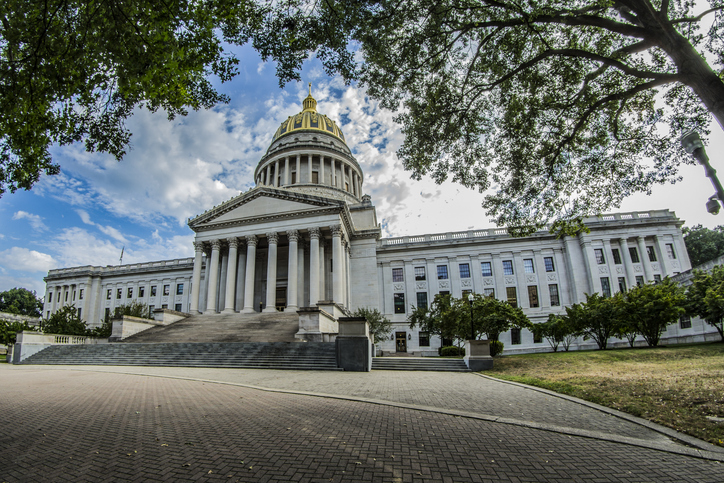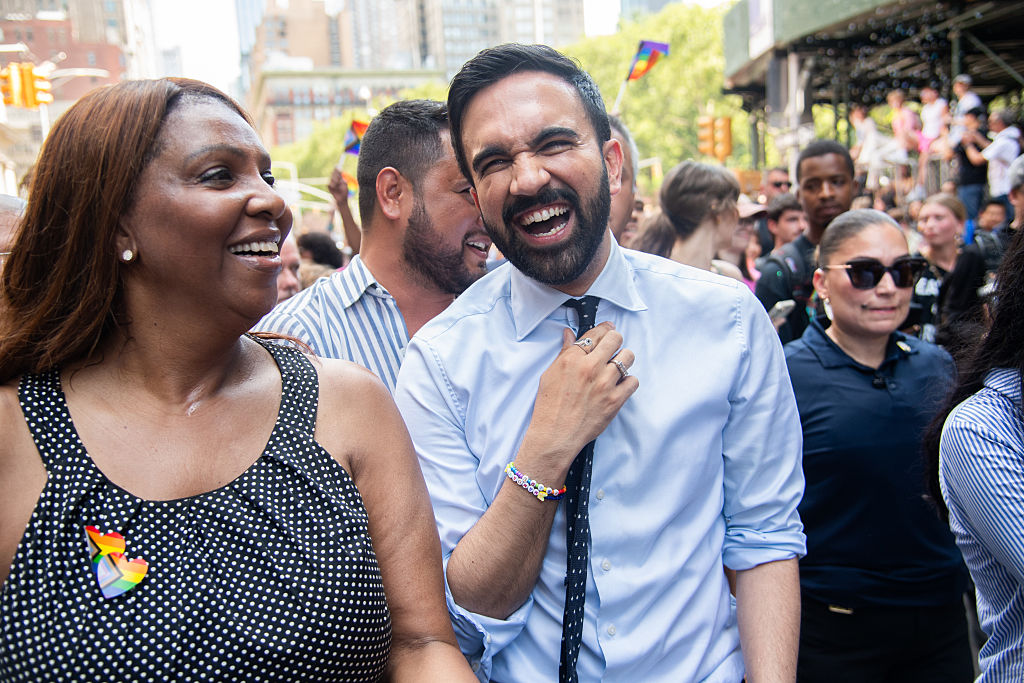The Tulsa Race Massacre And Making The Case For Reparations

Source: Universal History Archive / Getty
The Tulsa Race Massacre is the greatest act of racial terror committed by whites in a United States city against an African descended community. It is a stark example of the failure of the U.S. democracy to provide justice for race-based terroristic violence – to require reparative justice – thus, condoning it.
It is one of many instances where state, local and federal governments failed to acknowledge and repair the injuries wrought by terroristic violence against Black people. The failure to repair these historic injuries that have present-day consequences increases the urgency for passage of H.R. 40, the Commission to Study and Develop Reparations Proposals for African-Americans Act, and like state bills. Passage of H.R. 40 is one of the policy demands from the Movement for Black Lives’ Vision for Black Lives policy platform.
The Tulsa Race Massacre was promulgated by an angry, white mob that included city police and aided by the Oklahoma National Guard that flattened much of the Greenwood District, an all-Black community. The result was the death of at least 300 Greenwood residents, the exile of many including leaders of the community and the loss and destruction of real and personal property. Estimates of the total property damage have amounted to approximately $4 million at 1921 rates; $58 million at 2020 rates.
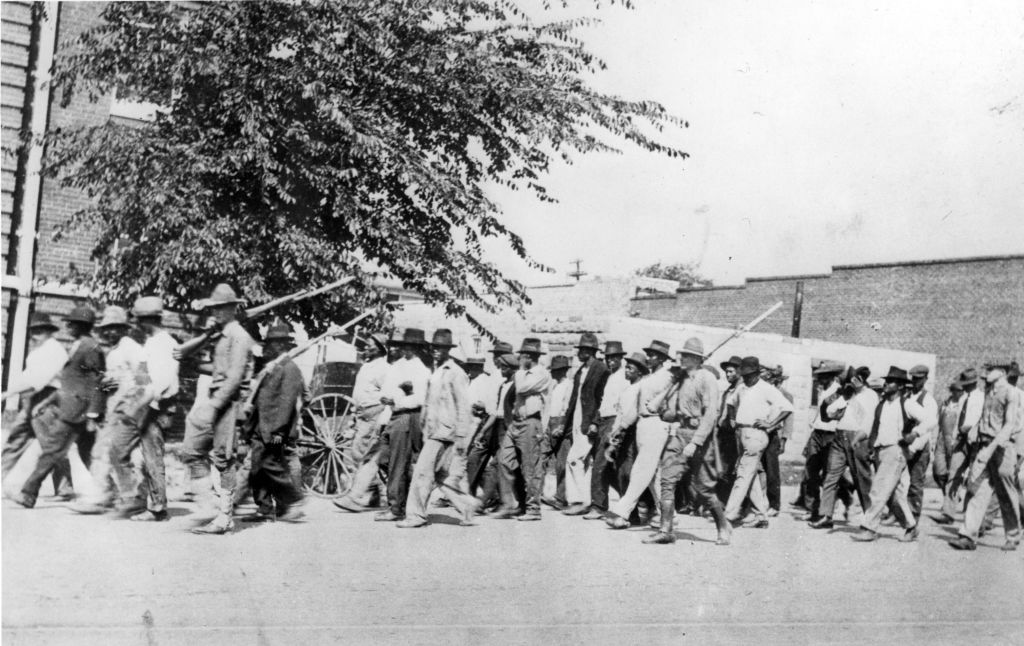
Source: Oklahoma Historical Society / Getty
The Greenwood District was built amidst racist and state-imposed segregation enforced by the white-led City of Tulsa. Founded in 1906 by O.W. Gurley in 1906, Greenwood was Black people’s response to racism and segregation in Oklahoma, using their skills, ingenuity and talents to build a prosperous, thriving community outside of Tulsa. By 1920, approximately 10,000 African Americans lived in the Greenwood District.
Due to its economic vibrancy, Greenwood became known throughout the country as Black Wall Street. It was so economically self-sufficient that a dollar circulated within the community as many as fifty times. It was a tourist destination for many famous and successful African Americans throughout the United States.
Yet, its prosperity did not insulate it from the battle cry of white supremacy to deny the right of African descended people to thrive, and live, in peace. In fact, its very existence proved the falsity of the basic tenet of white supremacy that African peoples were inferior. As Otis Clark, a resident of Greenwood who was a plaintiff in the 2003 federal case, said: “they (whites) were jealous of our little town.” So, under the guise of protecting the virtue of a young white woman who accused a young Black man, Dick Rowland, of molesting her, an angry white mob, incited by Tulsa newspapers that engaged in irresponsible reporting, went to the Tulsa jail where Rowland had been taken after his arrest. The mob would have been a lynch mob but for the protection of Black, World War I vets living in Greenwood who went to the jail to protect Rowland. Unable to secure Rowland, and having their anger fueled by alcohol and the sight of Black men standing between them and Rowland, the mob left the jail and headed for Greenwood and destroyed it.
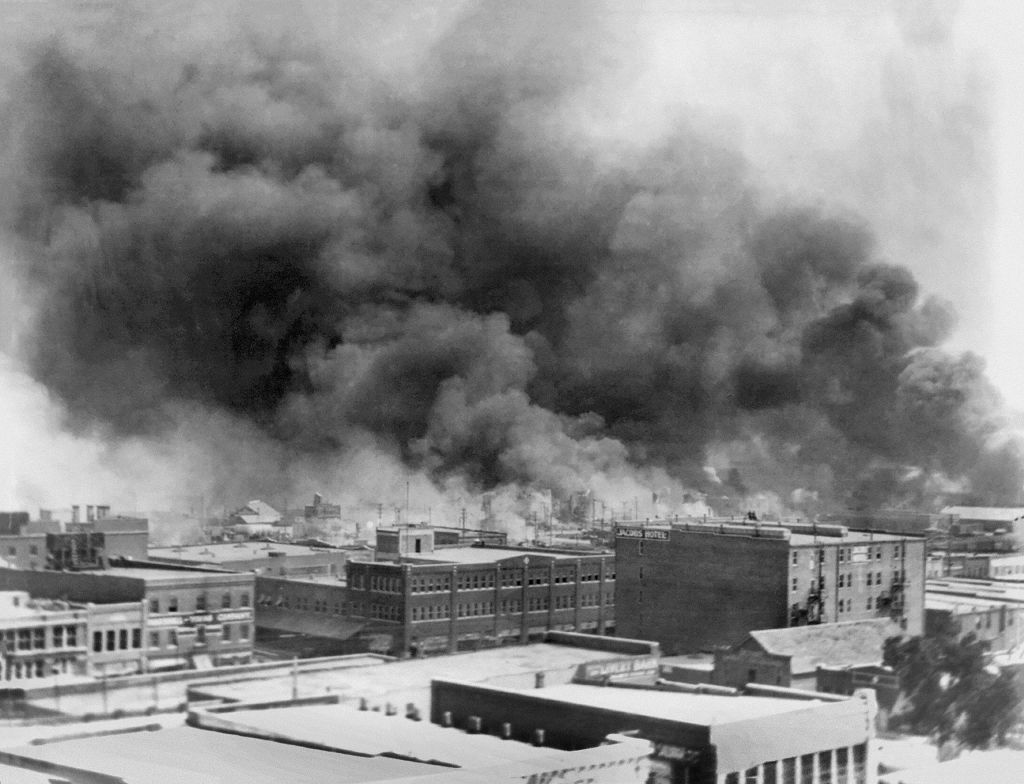
Source: Universal History Archive / Getty
Those who survived were “forced to march for blocks through white neighborhoods with their hands in the air while their homes and possessions burned behind them. Approximately 6,000 Greenwood residents were forcefully detained in what the Tulsa World called “concentration camps,” a fenced pen guarded by armed white men, many forced to work for the city without pay – a badge of slavery.
Neither the City of Tulsa nor the State of Oklahoma has made reparations for these heinous acts in which they were complicit, including death and exile, the loss of inheritance of those who descended from them and the overall destruction of a vibrant community that now is less than a shell of itself. Meanwhile, building up to the 100th anniversary, the City’s political and business leadership used the history of the Greenwood District and the Race Massacre for their own financial gain. They are building a tourism industry on the backs of Black suffering, with no design to provide reparations to those families who were victimized by the outrageous terroristic violence.
Indeed, residents of Greenwood and leaders in the reparations movement for the destruction of Greenwood have been virtually ignored rather than included in city and business-led development plans. The city and business leaders’ actions make a mockery of reparations. They are being unjustly enriched – gaining from the destruction of Greenwood in 1921 over and over – taking the land that was torched, building a university on it, and now obtaining financial gain by telling the story of the Race Massacre in which the City participated.
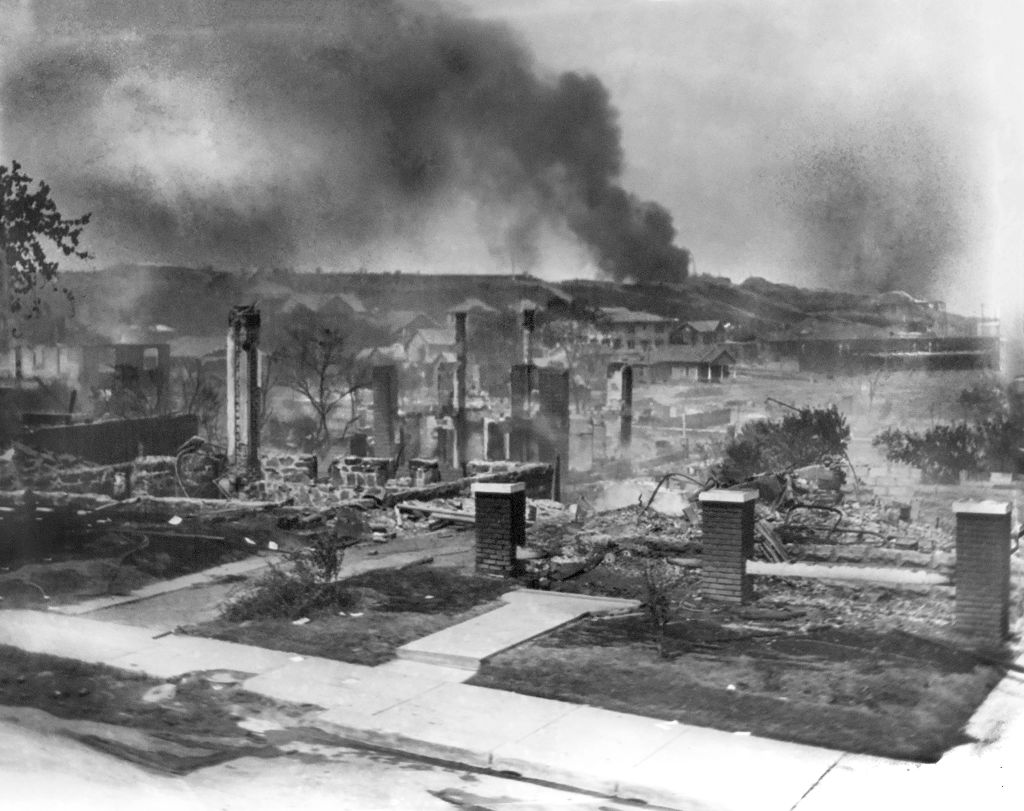
Source: Universal History Archive / Getty
This 100th Anniversary is the 100th year in which justice has been denied to the survivors and descendants of those who lost life and property at the hands of a city and state-supported white mob. It signifies the failure of the United States and the states within it to be accountable for the racial terror spawned in slavery, the legacy of which continues to this day – evidenced by racial disparities, including in health, education, criminal and civil justice and wealth. The passage of HR 40 is an important step in the United States owning its crimes against African descended people and making reparations for the injuries for which it and its predecessor colonies are responsible.
Adjoa A. Aiyetoro is an activist attorney with extensive experience working domestically and internationally to obtain remedies for historic and present-day wrongs to people of color, women, prisoners and other oppressed groups. She is a lifetime member of the National Conference of Black Lawyers (NCBL) and the National Coalition of Blacks for Reparations in America (NCOBRA). She has served as co-chairperson of NCBL’s Board and as its national director. Aiyetoro, as Co-Chair of NCBL, was a founding member of NCOBRA and served as its first woman co-chair.
SEE ALSO:
100 Years After The Tulsa Race Massacre: Continuing The Fight For Equity, Equality And Inclusion
New Documentary Exploring Tulsa Race Massacre Is A Testament To Black Self-Determination









